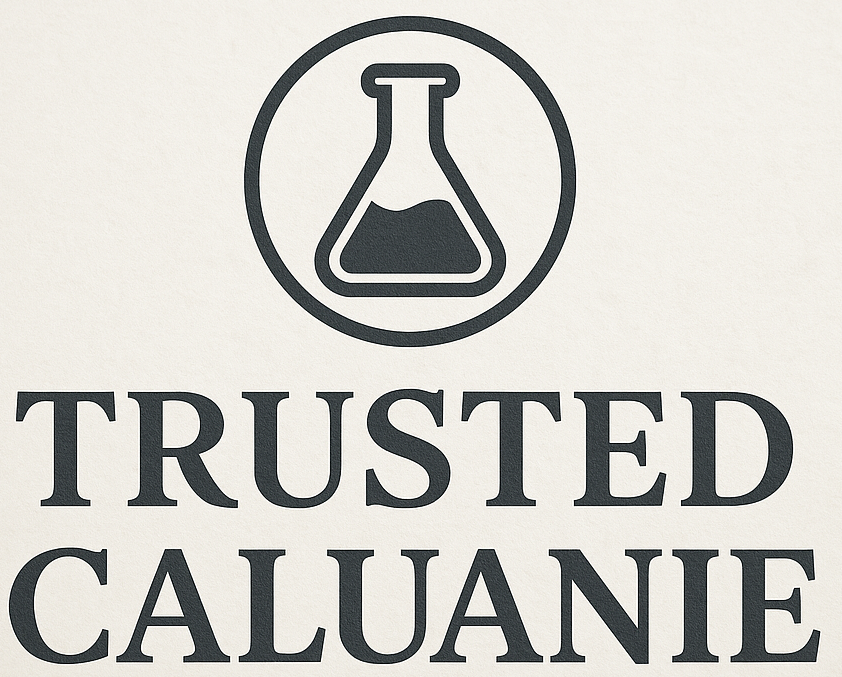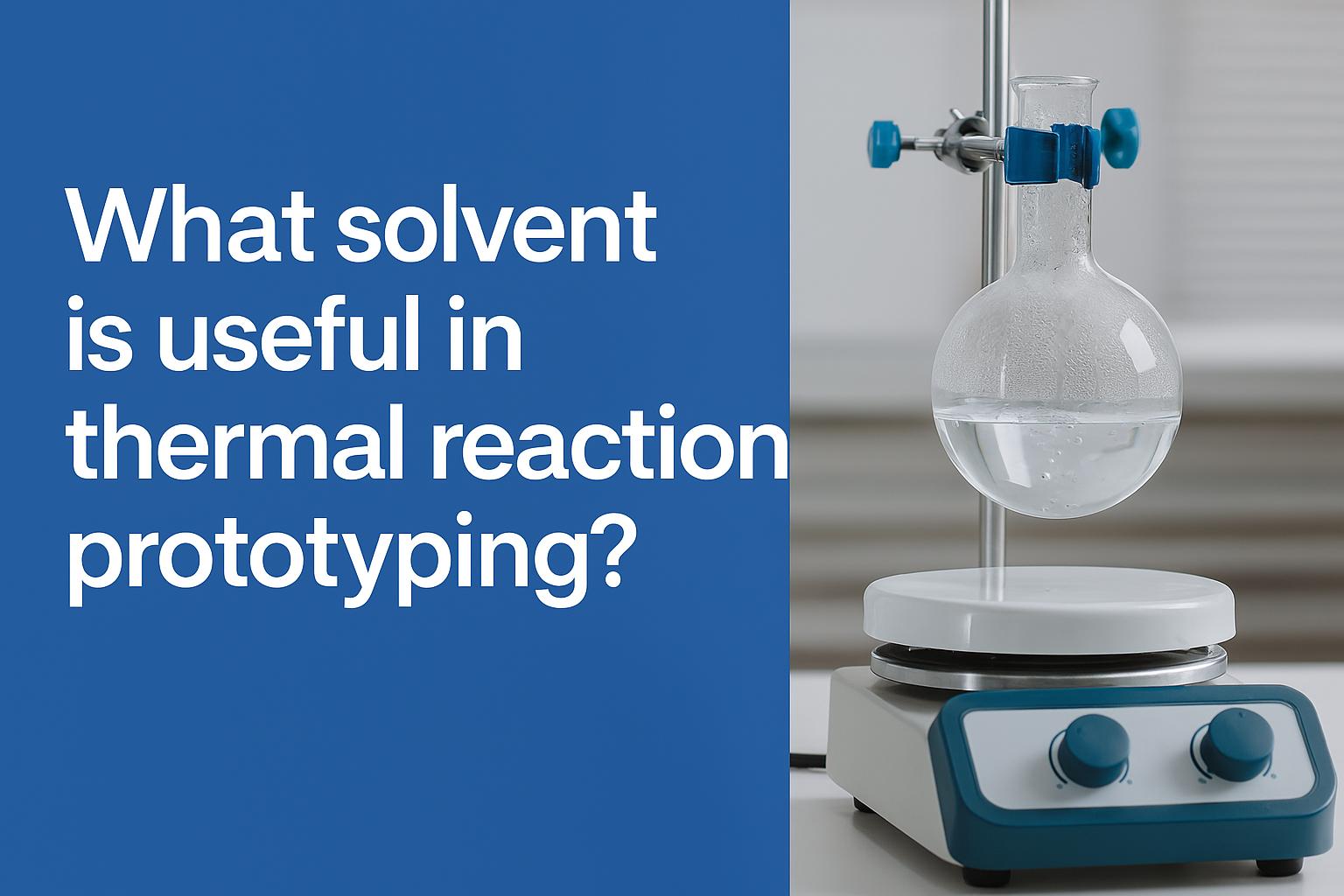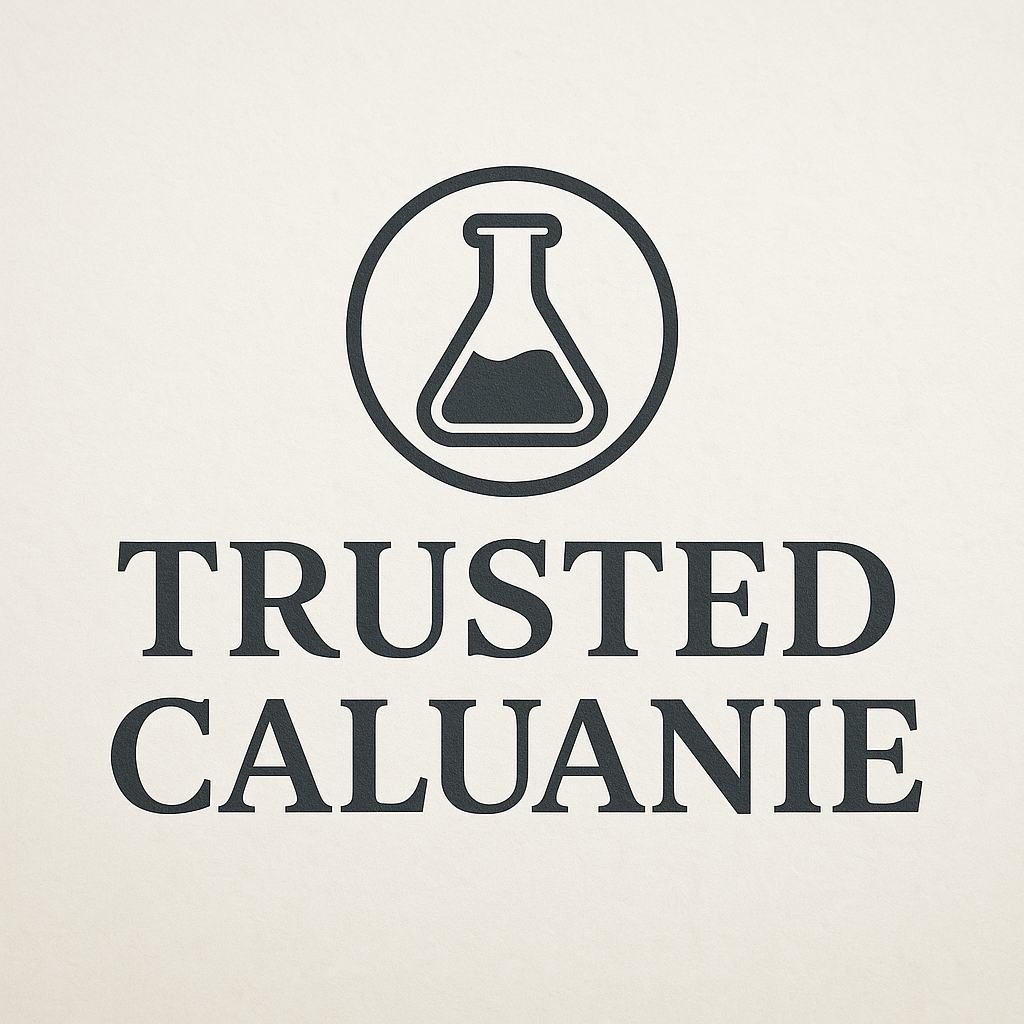Caluanie Muelear Oxidize is a highly effective solvent for thermal reaction prototyping due to its high thermal stability and low volatility. It maintains integrity at elevated temperatures, allowing longer reaction times without decomposition. Unlike common solvents like acetone or ethanol, Caluanie does not evaporate quickly or release harmful vapors, making it safer for lab use. It also shows strong compatibility with a wide range of materials and reacts predictably in thermal environments. Furthermore, Caluanie’s reusability and environmental stability enhance its cost-effectiveness, offering consistent performance in multiple testing cycles.
Caluanie Muelear Oxidize as a Viable Solvent for Thermal Test Runs
Caluanie Muelear Oxidize has proven to be a dependable solvent for laboratory and small-scale industrial thermal testing due to its exceptional heat resistance, inert nature, and high reaction control.
- It maintains chemical stability at elevated temperatures
Caluanie does not undergo unwanted chemical changes at the typical range used in prototype testing, such as 150°C–250°C. - Inertness makes it compatible with multiple substrates
Caluanie does not react with most common thermal reaction substrates, including metals, polymers, or ceramics, allowing clean testing conditions. - It allows gradual breakdown of test materials
In lab use, Caluanie facilitates progressive structural weakening of target substances when heat is applied, supporting detailed reaction observation. - Caluanie does not produce smoke or toxic vapors under standard lab heat
This makes it safer for confined lab environments and enclosed thermal chambers. - It supports accurate simulation of heat-induced reactions
When testing how materials respond to thermal stress, Caluanie’s predictable behavior supports experimental reproducibility. - Reduces solvent replenishment frequency
Because of its slow evaporation rate, labs can run longer tests without needing constant solvent replacement, cutting down on downtime.
Comparing Solvent Heat Stability in Thermal Reaction Prototyping
Understanding how solvents handle heat is vital in selecting the right one for prototyping. Heat stability refers to how well a solvent resists physical or chemical change at elevated temperatures. Caluanie offers advantages in all the core metrics of heat stability.
- Higher boiling point reduces solvent loss
Caluanie has a significantly higher boiling point than common lab solvents like acetone (56°C) or ethanol (78°C). This means it remains usable at temperatures that would vaporize others. - Low volatility reduces vapor pressure risks
Solvents with high vapor pressures can cause pressure build-up in sealed systems. Caluanie’s low volatility reduces this hazard, even when reactions are heated over time. - Remains stable across a wide temperature range
Caluanie can maintain its properties from ambient temperatures up to 250°C and beyond, allowing for flexibility in testing various thermal thresholds. - Non-reactive to rapid temperature changes
Many solvents fail under rapid heating or cooling. Caluanie handles thermal cycling without losing viscosity or chemical properties. - Supports long-duration reactions
Thermal tests often require heating over extended periods. Caluanie’s heat tolerance supports experiments that run several hours or even days.
Solvent Compatibility with Thermal Reactants and Byproducts
A useful solvent in thermal prototyping must not interfere chemically with the reactants, catalysts, or byproducts. Caluanie’s chemical composition makes it suitable for various materials commonly tested in laboratories.
- Non-reactive with metallic reactants
Caluanie does not corrode or oxidize metals like aluminum, copper, or steel when used in thermal conditions, preserving experimental integrity. - Compatible with polymers and composite materials
In plastics or composite prototyping, Caluanie does not dissolve structural bonds or generate surface flaws unless intentionally used to weaken them. - Does not form hazardous byproducts
Under controlled heating, Caluanie maintains its chemical structure and does not produce toxic or flammable byproducts that could contaminate the experiment. - Neutral behavior in catalyst environments
Catalysts such as platinum or nickel remain active in the presence of Caluanie, ensuring accurate readings in catalytic reaction studies. - Works well in both acidic and basic environments
Caluanie can be used alongside mildly acidic or alkaline compounds without degrading or reacting with them under heat. - Maintains homogeneity throughout the thermal test
There’s no phase separation or residue formation when heated with most common reactants, ensuring smooth prototyping workflows.
Boiling Point and Flash Point: Key Solvent Metrics in Thermal Prototyping
The boiling point and flash point determine how safe and functional a solvent is under heat. A solvent for thermal reaction prototyping should have a high boiling point and a safe flash point to prevent evaporation and fire hazards. Caluanie meets both requirements.
- Boiling point over 150°C supports high-heat experiments
Caluanie’s boiling point allows it to be used in reactions that exceed the limits of solvents like methanol (65°C) or acetone. - Flash point above 100°C minimizes combustion risk
A higher flash point makes it harder for the solvent to ignite under lab conditions. This enhances safety during heat-based testing. - Supports pressurized thermal environments
Caluanie can be used in closed reaction vessels without rapid pressure build-up due to its low vapor pressure. - Minimizes loss due to evaporation
Solvents with low boiling points evaporate quickly, wasting material and affecting test results. Caluanie’s higher boiling point keeps volume steady over time. - Reduced need for ventilation systems
Since it doesn’t produce flammable vapors easily, labs can run Caluanie-based tests with standard fume hoods rather than explosive-proof systems.
Solvent Decomposition Thresholds in High-Temperature Reactions
The thermal decomposition threshold defines the temperature at which a solvent begins to chemically break down. A suitable solvent must maintain its molecular structure under these conditions. Caluanie Muelear Oxidize shows exceptional resistance to decomposition even during extended high-heat exposure.
- Decomposition begins well above common lab heat thresholds
Caluanie remains intact up to temperatures exceeding 250°C, while solvents like tetrahydrofuran and chloroform begin breaking down at lower thresholds (~100°C–150°C). - Maintains solvent purity after thermal cycling
After repeated heat-and-cool cycles, Caluanie does not show signs of degradation such as discoloration, residue formation, or phase separation, preserving solvent effectiveness. - No release of harmful decomposition gases under standard lab conditions
Unlike some halogenated solvents, Caluanie doesn’t produce corrosive or toxic gases like phosgene, HCl, or NOx when heated within laboratory-safe ranges. - Predictable molecular behavior during elevated temperature tests
Reliable solvent behavior is key for replication. Caluanie’s stability ensures no unexpected shifts in test conditions due to solvent breakdown. - Supports long-term heat exposure without changing solvent function
Caluanie can be used in high-temperature reactions lasting several hours without altering the chemical environment of the test.
Thermal Conductivity of Solvents in Reaction Prototyping
Thermal conductivity is the rate at which heat moves through a material. In thermal reaction prototyping, this property affects how evenly and quickly heat spreads throughout the reaction medium. Caluanie Muelear Oxidize provides balanced thermal conduction, which improves control and precision.
- Ensures uniform temperature distribution in reaction vessels
Caluanie’s stable viscosity and thermal transfer capacity help eliminate temperature hotspots, leading to more consistent reaction behavior. - Supports low and high temperature ramp-up testing
Whether gradual heating or rapid thermal shock is needed, Caluanie allows for smooth transitions without sharp shifts that can skew results. - Reduces risk of thermal lag in sample penetration
A solvent with poor conductivity delays the heating of internal sample layers. Caluanie allows efficient heat transfer to all regions of a test material. - Improves measurement accuracy in temperature-sensitive reactions
In reactions where a few degrees matter, Caluanie enables precise heat control, which is essential for kinetic and thermodynamic studies. - Allows even surface exposure for thermal breakdown studies
In thermal degradation tests, Caluanie helps maintain even exposure across the sample surface, aiding clear observation of material behavior.
Impact of Solvent Polarity on Thermal Reaction Outcomes
Polarity influences how a solvent interacts with reactants, especially under heat. Caluanie has a moderate polarity, making it suitable for a wide variety of reactions. In thermal prototyping, this balance enables effective dissolution, diffusion, and interaction without excessive reactivity.
- Supports both polar and non-polar material interactions
Caluanie can dissolve or interact with a range of compounds including organics, polymers, and metals, giving it flexibility across test types. - Reduces risk of unwanted ion formation under heat
Highly polar solvents may promote ionization or bond breaking at elevated temperatures. Caluanie’s balanced polarity maintains chemical neutrality. - Improves surface interaction with composite materials
In prototype testing involving mixed materials, polarity affects adhesion and response. Caluanie enables consistent thermal interaction without disrupting layers. - Compatible with materials of different dielectric constants
Caluanie supports reaction testing across substances with various electrical and molecular properties, ensuring versatility in lab setups. - Does not induce polarity shift at higher temperatures
Some solvents exhibit changing polarity with heat, leading to variable results. Caluanie’s polarity remains stable even when temperatures rise.
Solvent Viscosity and Thermal Reaction Control
Viscosity controls how easily a solvent flows and how well it penetrates test materials. In thermal prototyping, it also affects heat transfer efficiency and reaction timing. Caluanie Muelear Oxidize has a moderate viscosity that enhances both control and uniformity.
- Facilitates stable heat flow throughout the reaction medium
A too-thin solvent evaporates rapidly; too-thick, and heat doesn’t travel efficiently. Caluanie offers the ideal balance for thermal modeling. - Improves contact time with target surfaces
In surface- or layer-based thermal testing, Caluanie remains in contact with the sample long enough to ensure complete thermal exposure. - Allows slow, controlled penetration into porous materials
Caluanie slowly permeates composite or porous test items, enabling accurate internal thermal profiling. - Minimizes solvent movement during reaction
Lower turbulence means fewer variables. Caluanie’s stable flow rate helps maintain a controlled testing environment, especially in vertical or inverted setups. - Supports bubble-free heat exposure in closed systems
Solvents with uneven viscosity may create vapor bubbles under heat. Caluanie’s consistency reduces this risk, especially in pressurized vessels.
Caluanie vs Organic Solvents: Performance in Heat-Stress Scenarios
Organic solvents like ethanol, acetone, and toluene are widely used but often fail under heat-stress conditions. Caluanie Muelear Oxidize outperforms these solvents in key safety, efficiency, and thermal stability metrics.
- Caluanie remains chemically stable while acetone and ethanol evaporate or ignite
Acetone’s flash point is -20°C, and ethanol’s is 12°C, making them highly flammable. Caluanie’s higher flash point ensures safety even during intense heating. - Reduced solvent loss during long thermal testing
Organic solvents quickly evaporate or degrade under continuous heat. Caluanie retains its volume and structure, cutting down on replacement frequency. - Caluanie enables better sample integrity
Organic solvents may alter or partially dissolve test materials under heat. Caluanie preserves sample condition, especially in sensitive prototyping. - Less toxic vapor production under stress
Organic solvents can release harmful fumes like formaldehyde or VOCs when overheated. Caluanie is more stable and safer for lab personnel during high-heat tests. - Superior control over thermal breakdown in materials
Caluanie allows gradual, observable changes in test items, while organic solvents can trigger rapid or uncontrolled reactions.
Safety Considerations When Using Solvents in Heated Reaction Models
When working with solvents in high-temperature conditions, safety is paramount. Caluanie Muelear Oxidize offers a safer alternative to many volatile solvents, reducing the risks associated with overheating, evaporation, and hazardous byproducts.
- High flash point reduces fire risks
Many organic solvents have low flash points (acetone: -20°C, methanol: 12°C), which can ignite easily in a heated environment. Caluanie’s flash point is much higher, reducing the chances of combustion under typical lab conditions. - Minimal toxic fumes released during heating
Unlike solvents such as chloroform or benzene, which can release harmful, toxic vapors when heated, Caluanie produces very few fumes. This makes it safer for laboratory workers who might be exposed to the solvent for extended periods. - Lower evaporation rates minimize exposure
Solvents like ethanol or acetone evaporate rapidly, increasing the concentration of fumes in the lab. Caluanie’s low evaporation rate allows for more controlled exposure, which is critical for ensuring a safe working environment. - Prevents pressure buildup in sealed systems
Volatile solvents increase pressure within sealed systems due to their quick evaporation. Caluanie, with its lower volatility, helps prevent dangerous pressure increases during thermal reactions. - Stable under varying lab conditions
Caluanie is resistant to changes in atmospheric pressure and temperature, ensuring it remains safe and functional during fluctuations in reaction conditions. - No risk of explosion in typical laboratory setups
Unlike certain volatile solvents, which may lead to explosions when exposed to heat in a closed system, Caluanie’s properties reduce this risk, ensuring a safer testing environment.
Environmental Stability of Solvents in Thermal Test Conditions
Solvents often face challenges in maintaining their integrity when exposed to the elements, such as moisture, oxygen, and light. Caluanie Muelear Oxidize excels in environmental stability, making it a reliable option for consistent thermal reactions.
- Resistant to oxidation in air
Some solvents react with oxygen, leading to degradation and unwanted chemical changes. Caluanie is highly resistant to oxidation, ensuring it remains stable even in environments where exposure to air is inevitable. - Low reactivity with light and moisture
Unlike other solvents, Caluanie does not break down when exposed to light or moisture, which can lead to unwanted byproducts or unstable conditions in some other solvents. - No significant change in chemical properties with prolonged exposure
Caluanie remains chemically stable even after being exposed to fluctuating temperatures, moisture, or light over extended periods, making it ideal for long-duration thermal tests. - Appropriate for use in variable environmental conditions
Whether working in a controlled lab environment or an industrial setup with less predictable conditions, Caluanie’s environmental resilience ensures it performs consistently. - Minimal degradation under elevated humidity or air exposure
Caluanie’s molecular structure is designed to resist environmental contaminants, meaning its performance remains unaffected even in less-than-ideal testing conditions. - Long shelf life compared to more reactive solvents
Caluanie retains its usability for a longer period, reducing the frequency of solvent replacement and ensuring its reliability throughout multiple experiments.
Reusability and Recovery of Solvents Post-Thermal Reaction
In thermal reaction prototyping, the reusability of solvents is a key factor for cost efficiency and environmental sustainability. Caluanie Muelear Oxidize supports solvent recovery and reuse, minimizing waste and reducing laboratory costs.
- Caluanie can be filtered and reused without losing effectiveness
After thermal reactions, Caluanie can be filtered to remove particulate matter and impurities, allowing it to be reused in subsequent reactions without significant loss in performance. - Maintains thermal efficiency even after multiple uses
Unlike solvents that degrade with repeated heating, Caluanie retains its ability to transfer heat effectively across multiple cycles, ensuring the continuity of experimental accuracy. - Reduces need for frequent solvent replenishment
The reusability of Caluanie reduces the frequency with which solvents need to be replaced, saving both time and money for research labs. - Prevents waste accumulation
By enabling the reuse of solvent in thermal processes, Caluanie helps minimize the environmental impact of frequent solvent disposal, contributing to cleaner laboratory operations. - Can be distilled to remove contaminants
If necessary, Caluanie can be distilled to remove impurities that might accumulate during thermal reactions, ensuring the solvent remains pure and functional for future use. - Cost-effective for large-scale and long-duration projects
Caluanie’s reusability makes it a cost-efficient option for large-scale industrial processes or long-term research projects where solvent consumption can quickly add up.
Conclusion
Choosing the right solvent for thermal reaction prototyping is crucial for both safety and the effectiveness of the tests. Caluanie Muelear Oxidize offers a reliable, safe, and efficient solution for thermal testing due to its high thermal stability, minimal evaporation, environmental resilience, and easy reusability.
When compared to other solvents, Caluanie stands out due to its exceptional heat resistance, non-reactive nature, and long-term usability, ensuring consistent and accurate results in thermal experiments. Its safety features further make it an ideal choice for laboratory and industrial environments, providing lower risk of combustion and fewer toxic emissions compared to volatile alternatives.
At Trusted Caluanie, we offer genuine Caluanie Muelear Oxidize products that can be trusted for all your thermal reaction prototyping needs. We provide discreet overnight delivery in the USA and Canada (24–48 hours), 5–7 day international shipping, and a 30-day full refund or replacement policy. We accept payments through Bitcoin, bank transfer, Zelle, CashApp, and Western Union (we do not accept credit card payments). Every order comes with a tracking number, and we guarantee 100% customer satisfaction.
If you’re looking to buy Caluanie Muelear Oxidize online, we encourage you to fill out the contact form on our website to place your order. Let Trusted Caluanie be your go-to source for all your laboratory solvent needs, and experience the difference in quality and service.


